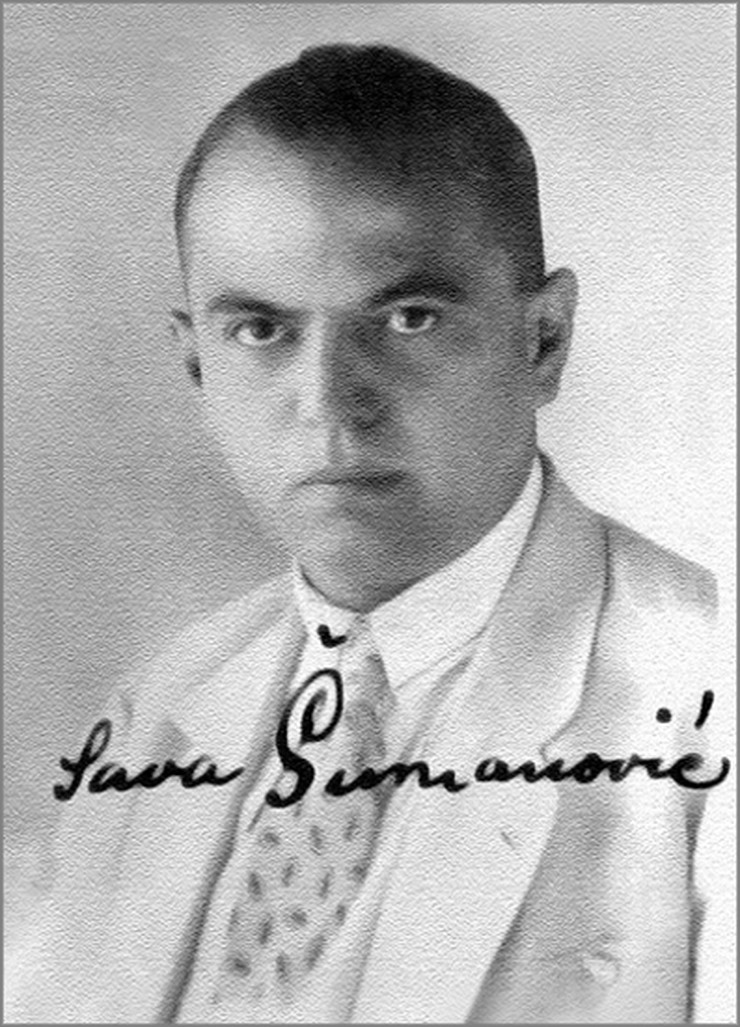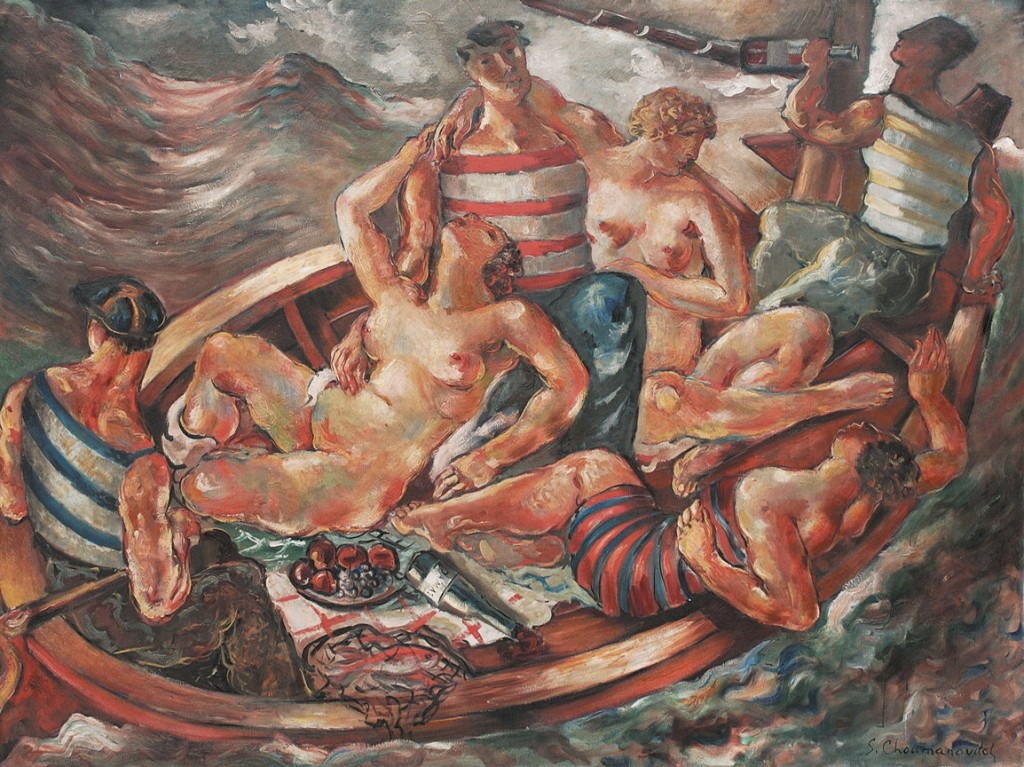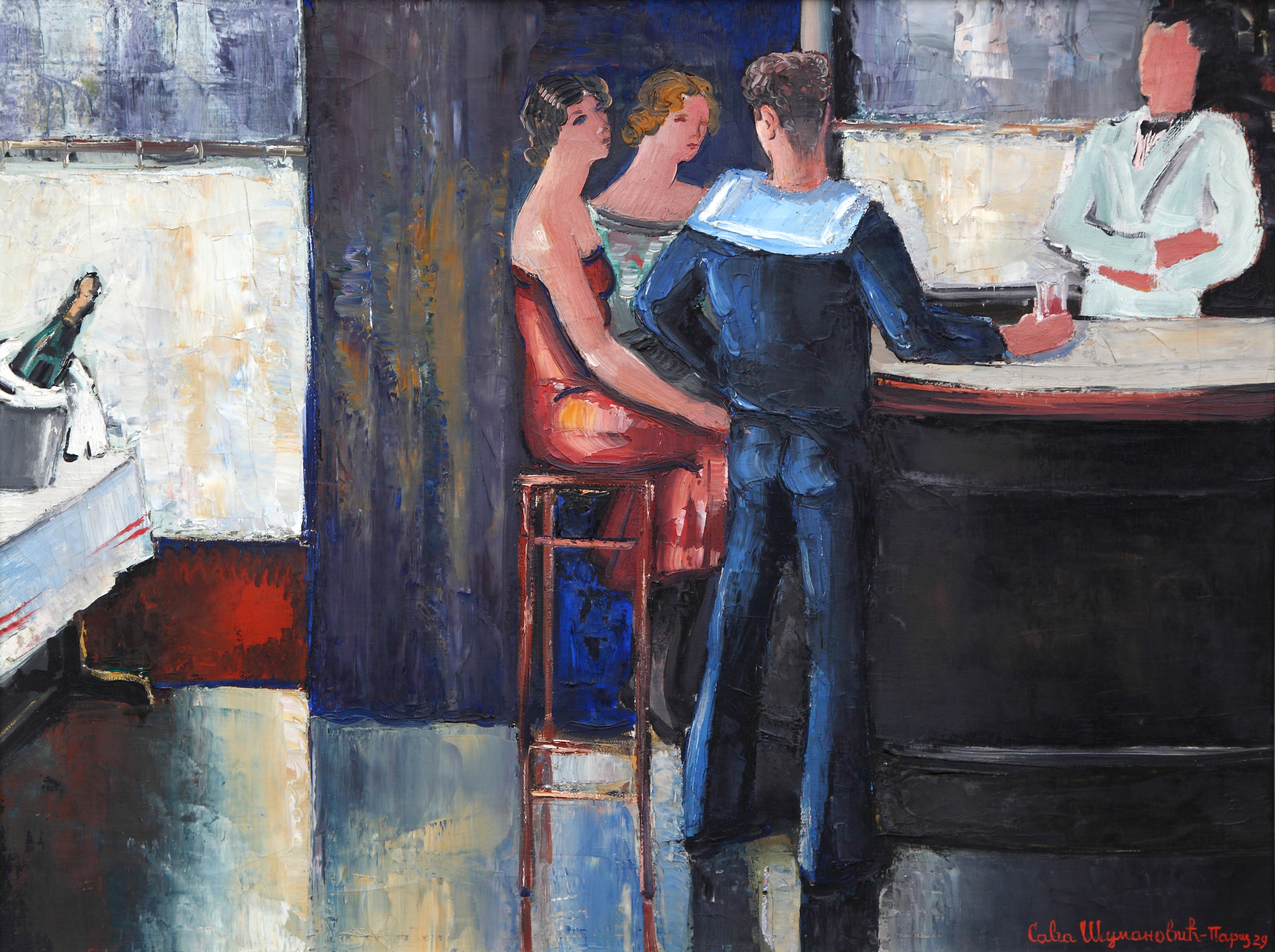Sava Šumanović, renowned Šid modernist
 |
Sava Šumanović was born on 22 January 1896 in Vinkovci. His parents Milutin and Persida came from prominent Šid bourgeois families. When Sava was four, the family returned to Šid. As a ten-year old, he enrolled in Real Gymnasium in Zemun. It was in this period that he started showing interest in arts, so he took up a painting course by Professor Isidor Jung. Upon graduating, he returned home, determined to make painting his life calling. In 1914 Sava enrolled in Arts and Crafts College in Zagreb, which would allow him to work as a teacher. Sava's art He attended the first year in the class of Professor Oton Iveković, and the next three in the class of Klement Crnčić. The school program followed the works of old masters of art - Duhrer, Michelangelo, Rubens and Rembrandt. The impressionists spurred his interst back in Zemun, so he went on to analyze and study their works on his own. He regularly took part in school exhibitions. His certificate of completed education noted the highest grades and qualifications. In July 1918 he took part in his school's final joint exhibition. The same year, he held the first independent exhibition in the Ulrich Salon together with Bogumil Car. He did illustrations for a literary magazine Juriš, edited by A.B. Šimić. He also worked as a scenographer in the National Theater. In May 1920 he had the second independent exhibition in the Museum of Arts and Crafts. |
He presented the works indicating symbolism and secession, at the time being popular in Croatian art. The exhibition earned positive reviews, he sold a great number of paintings, and with the support of his father he headed to Paris, the main center of Europe's art scene at the time. His first stay in Paris lasted only a couple of months. He enrolled in a course by a renowned art educator and artist Andre Lot, being one of his best students. Šumanović's teacher belonged to the school of analytical cubism, constructivism. It was the time when the most significant cubist paintings in the history of Serbia's art were made: A sculptor in his studio, Still life with a clock, A sailor on the pier, Port agent. Andre Lot had a major influence on Šumanović throughout his entire life.
In the summer of 1921 he returned to Zagreb, and in October he organized an exhibition of paintings following the new style taken from Lot, in the Art Pavillion. The conservative critics and audience in Zagreb did not understand his new works. Sava Šumanović spent the following four years in Zagreb, tirelessly trying to change the conservative and provincial views of Zagreb's art circle. In this period he wrote the articles Painter on painting and Why I love the art by Poussin, being very significant in understanding his works and art.
|
Sava was able to take a second visit to Paris upon selling twenty paintings to lawyer Dorić in 1925. They are now kept at the Gallery of Matica srpska in Novi Sad. The second stay in Paris was marked by humiliating conditions of awarding the visa to Sava Šumanović. He had the status of a student, with limited residence permit, he was prohibited from selling paintings, he once again enrolled in the course by Andre Lot. He exhibited his works at the Autumn Salon in Paris 1926. Renowned French magazines dealing with art topics wrote about Sava Šumanović and displayed his reproductions. During this period, he painted Breakfast on the grass, autoportrait with four nude acts in landscapes, now being a part of Memorial Collection by Pavle Belјanski in Novi Sad. He participated in the painting of a popular cafe „La Coupole” in 1927. An exhibition of his works displayed in this cafe has recently been organized in Paris, and the French fashion magazine Vogue highlighted it among top five exhibitions.
The same year, he painted his most significant work, the Drunk Ship. He created this painting of monumental dimensions by working committedly in only seven days and nights. He exhibited at the Salon des Indépendants, but the critics' reviews were divided. The Drunk Ship is now a part of collection of the Museum of Contemporary Art in Belgrade. |
 |
Difficult work conditions, negative criticism and a series of other personal events have brought the artist to nervous exhaustion, so in 1928 he returned to Šid for recovery. This period generated the first paintings of the Šid landscape - Srem County, a series of landscapes capturing the unique light and atmosphere of his hometown. This theme earned much more of his attention later on, once he returned home to stay. In September 1928 he exhibited the paintings created in Paris at the New University in Belgrade. He earned positive impressions from both the critics and the general audience, he sold out most of the paintings and once again headed to Paris. This would be the last stay in his favorite city, and during this one-year period he created his masterpieces: The Red Carpet, The Lying Female Act, Luxembourg Park in Paris.
| At home in Šid, Šumanović entirely devoted himself to painting. For the first couple of years he painted acts based on the sketches he brought from Paris, and landscapes of his immediate surroundings, and these remained the dominant themes until the end of his life. His father Milutin died in 1937, after which Sava took it upon himself to take care of the family estate. According to the saved documentation, it can be noted that he approached this task with the same devotion as everything else he took up in his life. He learned English, took part in dancing classes, attended a visiting exhibition of 19th century French painting in the National Museum in Belgrade, while painting all the time, preparing himself for the grand exhibition. In September 1939 he organized a great independent exhibition at the New University in Belgrade, presenting 410 paintings. Being satisfied with the achieved success, he returned to Šid and continued working with great flight, in spite of the war that had just started. He was unlucky to peacefully devote himself to what he loved the most and did with highest skill. The war eventually came to the small town of Šid, which became part of the Independent State of Croatia in 1941. Cyrilic became a prohibited alphabet. Sava Šumanović stopped signing his paintings. In a ridiculous action organized by Ustasha group on a holy day of the Dormition of the Mother of God, on 28 August 1942, he was arrested and shot in Sremska Mitrovica, together with a large group of Šid inhabitants, and buried in a common grave. This was the tragic end of one of the greatest Serbian painters of all times. |
Gallery "Sava Šumanović"
Address: 7 Svetog Save, Šid
Working hours: Monday - Friday, 9 to 16h, Saturday - 9 to 15h
www.savasumanovic.rs
www.facebook.com/sava.sumanovic
"Considering my son’s life wish a duty I needed to fulfill as a mother and a human, I am making it possible today, as our common goal, by donating Sava’s life work to the hometown he immortalized with his love, making it well-known and famous with his paintings. After my son’s unfortunate and sudden death, I have held on to his strongly repeated wish to have his art situated and kept in our homeland. By fulfilling this legacy, I am convinced his work will be accepted with deep understanding and love, both by the citizens of Šid, and the future generations". These were the words by Persida Šumanović starting the donation agreement, which served as a basis for establishing the Gallery "Sava Šumanović" Šid in 1952.
Thanks to her great desire, nobility and persistence, ten years after the death of her only son, she gifted the town of Šid with a legacy of invaluable artistic and material value. In line with the agreement provisions, the legacy was situated in Šumanović family home, which previously housed the municipal court.
The art fond of the Šid gallery involves 417 works, including 350 oil paintings and 67 sketches in various techniques (drawing, pastel, watercolor, diluted tempera). The majority of paintings belong to the artist’s final creative epoch (the Šid period), created in Šid during the last decade of the artist’s life. A smaller part of the collection, only in terms of numbers, not the significance, involves paintings brought from Paris by the artist himself. Following the death of Persida Šumanović, the gallery became the owner of numerous documents she kept, being highly significant in studying the artist’s personality and work. The gallery’s exhibition area covers 600 square meters, enabling a large number of works to be presented in the permanent exhibition. The visitors have an opportunity to get thoroughly acquainted with the last decade of Sava Šumanović’s artistic work.
| In the gallery’s immediate vicinity, visitors can also see Sava Šumanović’s memorial house, located in the street nowadays bearing the artist’s name. The municipality bought off his family home from his successors, and the house has been open for visitors since 1982, now being protected by the National Cultural Heritage Protection Institute. It was in this house that the painter spent his childhood as well as his last days. It preserves the family furniture and an atelier where he made some of his masterpieces. Particularly interesting is the view of Šid church from the atelier, which served as inspiration for many of his works. He was taken away from this house on 28 August 1942. Nowadays, the house seeks adaptation to regain its original appearance. We invite all admirers of fine art to visit the gallery and the Šumanović family home in Šid, and socially-responsible companies from the French-Serbian Chamber of Commerce to contact us at umetnostsrbije@naled.rs for joint promotion of the artist’s works within the Francophony programs and cultural exchange of Serbia and France, and help the gallery "Sava Šumanović" to maintain adequate memory of the great artist. |
 |







